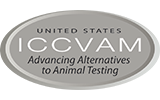In Silico Approaches in Organ Toxicity Hazard Assessment: Current Status and Future Needs in Predicting Liver Toxicity
Hepatotoxicity is one of the most frequently observed adverse effects resulting from exposure to a xenobiotic, and one of the major reasons for drug withdrawals, clinical failures, and discontinuation of drug candidates. Faster and cheaper methods to assess hepatotoxicity that are both more sustainable and more informative are critically needed. A review (Bassan et al. 2021) coauthored by ATSDR, FDA, and NIEHS scientists summarizes biological mechanisms and processes underpinning hepatotoxicity and describes experimental approaches to support the prediction of hepatotoxicity, including toxicokinetic considerations. The paper describes the increasingly important role of in silico approaches and highlights challenges to the adoption of these methods, including the lack of a commonly agreed upon protocol for performing such an assessment and the need for in silico solutions that take dose into consideration. A proposed framework for the integration of in silico and experimental information is provided, along with a case study describing how computational methods have been used to successfully respond to a regulatory question concerning non-genotoxic impurities in chemically synthesized pharmaceuticals.



